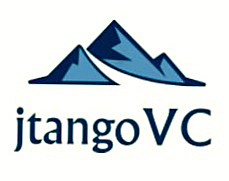I’ve attended recently a number of accelerator events. I’m struck by how much smaller the crowds are. The bloom is definitely off the seed rose.
You’ve heard about the Series A Crunch, that there is very little money available to fund post-seed companies, that this is a cash problem. My partner Eric Hjerpe views it a bit differently: he looks at it through the lens of human capital. We think therefore that the Series A dearth is actually about a VC bottleneck.
Here’s why. Eric has gone through the list of Boston VCs, and he estimates that there are only about 15 “check writers” left in town for tech Series A rounds. These are individuals who can set terms and they have the following profile:
- Invest in Boston and early stage (excludes growth equity and folks who are spending nearly all their time in SF and/or NYC)
- Know the Internet/tech sector (so, excludes life sciences)
- Have time (excludes those who are fundraising, which can be a very intense and lengthy process)
- Are part of a firm’s General Partner legal entity (and thereby have the power to get an investment done)
- Have a fund size large enough to be able to price the Series A (usually about $25MM+ per partner per fund)
Eric estimates that there are only about 15 individuals who fit this profile. The average VC probably invests in about one to two new Series A investments a year. So, our group estimates that only about 20 to 25 Series A financings will happen this year, which means that the hundreds of new seeds face a high bar.
How high is that bar? Eric has reached out to many of our VC colleagues and have asked them what they need to see in terms of traction in order to price a Series A. He often hears the following: $50K to $100K of monthly recurring revenue.
Given this, this is the advice we are giving to entrepreneurs for their first financing:
- Make sure your first financing is ample enough to hit a real and meaningful valuation inflection point. This is usually tied to the business and is not purely about product development.
- If possible, attract one or two “life cycle VCs,” who can invest in each financing round. So, if there’s need for more time, they can give you more money.
- Include “safe” strategic money (no bells and whistles in the terms). I’ve been surprised by how some of our entrepreneurs have been able to creatively pull this off.
These are challenging times for most entrepreneurs. I think the key is persistence. Eventually, the pendulum will swing back and we will get back to a healthy Series A market. The trick is to buy enough time to get there.

V. nice idea and post! A couple of questions: #1 Did Eric come up with the number for a healthy market here in Boston? #2. Any idea what the comparable number for SV is?
Good ideas but we don’t have that data.
Great points, all.
Does this also point out the need for (and perhaps respond to the growing number of) “super angels” or angel groups which enable seed companies to go further since they’ve raised more than seeds of a generation ago…coupled with the lower cost to get a business to the $50-$100k MRR level leveraging variable cost infrastructure and low cost development tools?
I think it does, but those investors often don’t invest in follow-on rounds.
Jo –
Naive question I am sure but what is the role and effect of crowd funding?
RD
Curious to get your thoughts – but personally, I feel like an MRR threshold is becoming the sneaky way that VC’s pass, but still keep their options open for the future.
When they don’t like something about a deal, they can default to “we’ve moved upstream, and we’re investing in companies with over $X in MRR.” In reality, often times it’s something else about the deal that is making them pass, but they want to keep the door open for the future.
Anecdotal example – two companies I work with, both enterprise SaaS companies, recently pitched the same VC (I won’t name for obvious reasons, but a big brand name firm). One company is pre-revenue, the other has $75k in MRR. However, the pre-revenue company is in a wide open market, vs. the one with $75k in MRR is in a convoluted, crowded market. The VC funded the pre-revenue company, but not the one with $75k in MRR.
I totally understand why – I think the pre-revenue company has more potential, and with a wide open space, it could be a HUGE play. However, the reason the VC gave for passing on the other company was wanting to see more MRR traction – not the fact that the space is crowded, market isn’t big enough, etc.
I’m not criticizing the VC at all – totally get that they want to keep their options open. But I’m curious – do you think the bar has been raised, or does it just seem that way because traction is the perfect excuse to pass?
i think the bar is much higher. i’ve been in VC since 1998 and i’ve not seen the Series A market this tight since the 2000 dot-com crash.